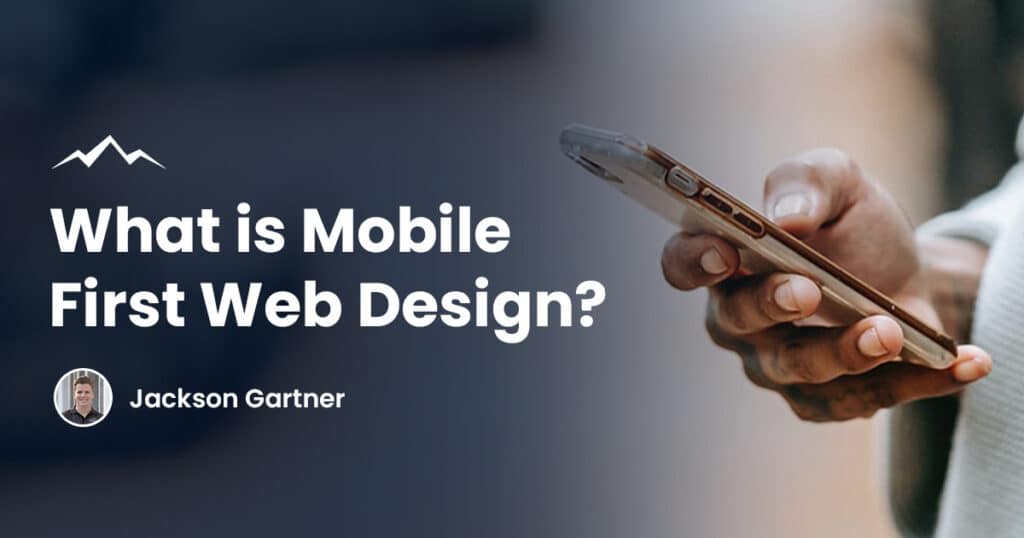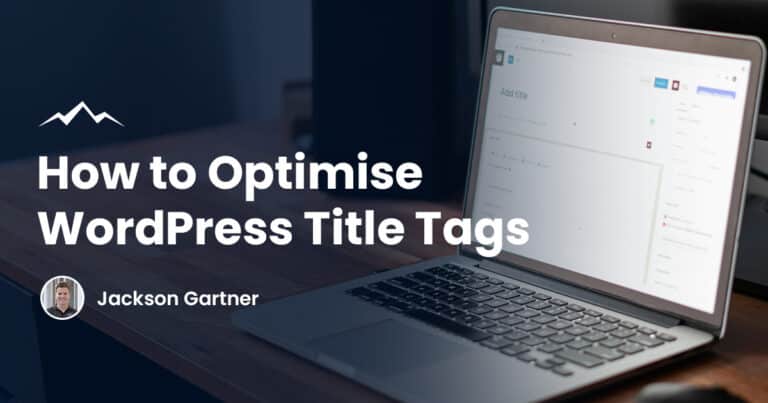Mobile-first web design is an approach to designing websites with a primary focus on mobile devices. This ensures the best possible user experience for people on their phones and tablets, before catering to larger screens.
Websites are initially designed for smaller screens and then converted to larger ones, ensuring seamless browsing across all devices.
The Importance of Mobile-First Web Design
With mobile devices becoming the primary method for accessing the internet, it is crucial to optimise websites for these users. As of late 2022, over 59% of global website traffic came from mobile devices.
This trend is expected to continue, with the number of smartphone users worldwide projected to reach 6.1 billion by 2028.
If a website doesn’t consider mobile users, it risks losing a significant number of its visitors.
Benefits of Mobile-First Web Design
There are many good reasons for businesses to use mobile-first website design, including:
- Higher conversion rates: A study by Google found that mobile-friendly sites increase sales and customer retention.
- Improved search engine ranking: Google has been prioritising mobile-friendly websites in its search results since 2015, resulting in better search rankings for websites that cater to mobile users.
- Increased engagement: Google research has shown that 53% of website visits are abandoned if a mobile site takes longer then 3 seconds to load.

Tips for Mobile-First Web Design
Here are some suggestions from our web design team for creating a mobile-first website:
Simplify design
Mobile devices have limited screen space, so it is important to maintain a clean and uncluttered design. Avoid complex images and animations, focusing on simplicity and ease of use.
Prioritise content
Make sure that important content is easily accessible and navigation is straightforward. Use headings and subheadings to break up text and enhance readability.
Organise content based on user needs and relevance, ensuring a smooth browsing experience.
Test your design
Test your website on multiple devices and platforms to ensure it functions as intended.
Use tools like Google’s Mobile-Friendly Test to confirm that your site is optimised for mobile phones and that visitors will have a good experience using your website.

How to Use Mobile-First Web Design
Building a mobile-first website requires good planning to make sure users enjoy using your site. Try following these steps to create a mobile-first website:
Identify your target audience
Understand the preferences and browsing habits of your target audience. This information will help you make informed decisions about the design and layout of your mobile site.
Plan your website content
Determine the most important content and features that your mobile users need. Prioritise these elements in your design to ensure easy access and navigation.
Choose a responsive platform
Select a responsive website platform that caters to your website’s needs.
For content-driven sites, consider using a Content Management System (CMS) like WordPress, which offer mobile-friendly themes and plugins.
For more customised solutions, use a framework like Bootstrap or Foundation, which provide pre-built templates for designing mobile-optimised websites.
Design with mobile in mind
Start by designing for the smallest screen size and progressively enhance the design for larger screens. Focus on simplicity, legibility and touch-friendly elements to ensure your site is easy to navigate.
Optimise images and media
Compress and resize images to reduce loading times on mobile devices. Use responsive images and alternative formats like WebP to improve performance.
Use a mobile-friendly navigation
Design a mobile-friendly navigation menu, such as a hamburger menu or a collapsible accordion, to make it easy for users to explore your site on smaller screens.
Speed up your site
Don’t use too much unnessesary code or plugins that will slow down your website. Use caching, Content Delivery Networks (CDNs), and code minification to optimise your site’s performance on mobile devices.
Test and refine
Continuously test your mobile site on various devices and browsers to identify any issues or areas for improvement.
Use tools like Google’s Mobile-Friendly Test to evaluate your site’s performance and make necessary adjustments.
By following these steps, you’ll create a mobile-first website that delivers an exceptional user experience, improving engagement, conversions, and customer retention.

Frequently Asked Quesitons
What is the difference between mobile-first and responsive design?
Mobile-first design is an approach that prioritises designing for mobile devices first, then adapting this design to larger screens.
Responsive design is a technique that allows a website to adjust its layout and design based on the screen size and orientation of the device being used.
While both approaches aim to optimise websites for mobile devices, mobile-first design specifically focuses on creating a seamless experience for mobile users from the beginning.
How does mobile-first design affect SEO?
Google has been prioritising mobile-friendly websites in its search rankings since 2015. Adopting a mobile-first design not only improves user experience but also enhances your website’s search engine ranking.
Websites optimised for mobile devices are more likely to rank higher in search results, increasing visibility and driving more organic traffic to your site.
How can I ensure my website is mobile-friendly?
To ensure your website is mobile-friendly, follow best practices such as using a responsive design, simplifying the layout, prioritising important content, optimising images and media, and implementing mobile-friendly navigation.
Regularly test your site on various devices and browsers to identify any issues and make necessary adjustments.
What are some common mistakes to avoid in mobile-first design?
Some common mistakes to avoid include:
- Overloading the mobile site with heavy content and features
- Using non-responsive design elements
- Using small text or buttons that are difficult for users to interact with
- Neglecting to test and optimise the site’s performance on various devices and browsers
Can I use a mobile-first approach for an existing website?
Yes, you can implement a mobile-first approach for an existing website.
This may involve redesigning the site’s layout, navigation, and content to prioritise mobile devices, as well as adopting responsive design techniques to ensure the site adapts seamlessly to different screen sizes.
It is essential to test and refine the updated site to ensure an optimal user experience across all devices.

Conclusion
Mobile-first web design is no longer a luxury but an essential aspect of website design.
By focusing on mobile devices, websites can provide a superior user experience, improve their search engine rankings, increase conversion rates, and retain customers.
By implementing the detailed tips mentioned above and staying up to date with the latest mobile design trends and best practices, businesses can create mobile-first websites that deliver outstanding results and keep their audiences engaged.
To your success,
Jackson




